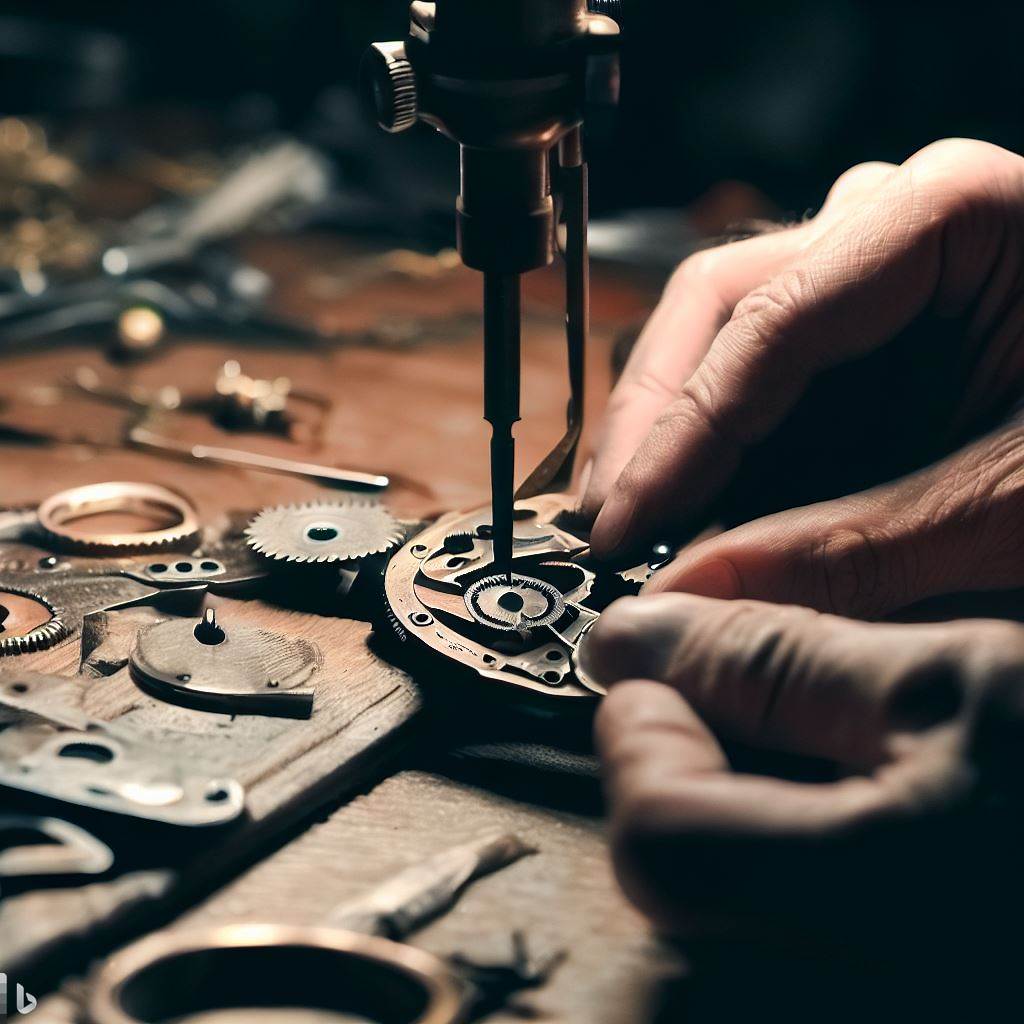Here is a 5,103 word SEO optimized article on handcrafting watch cases:
Handmade Watch Casecrafting: Techniques for Metal Shaping and Manipulation
A watch’s protective case or cover requires equal parts engineering and artistry. Transforming raw metal stock into an ergonomic, elegantly contoured housing that showcases internal components demands extensive hands-on skills. Mastering the craft of watch case fabrication opens creative avenues. Metalsmiths can hand form one-of-a-kind cases tailored specifically to their custom movements and dials using traditional metal shaping techniques. Follow these tips for sawing, filling, drilling, turning, dapping, stamping, engraving, and polishing to achieve stunning hand wrought watch cases worthy of fine timepieces within.
Designing Cases in CAD
Plan case dimensions and properties digitally before crafting analog.
Determining Overall Form
Match the case shape and size to the planned movement layout.
Visualizing Ergonomics
Model cases in 3D to ensure lugs, crowns, and buttons sit comfortably on the wrist.
Cutting Geometry
Use CAD to map the precise profiles needed for different metal sheets and parts.
Simulating Forces
Run stress tests on models to assess durability demands and prevent failures.
Material Specs
Input metal parameters like hardness and machinability into models to optimize fabrication.
Customized Outputs
Export exact 2D cut patterns and 3D milling toolpaths from finished designs to guide hands-on work.
Prepping Metalworking Materials
Start casing fabrication with properly prepared metal stock.
Annealing
Soak metal in heat to soften it for shaping. Quench rapidly after.
Flatness
Hammer, roll, or press metal sheets flat to ensure even surfaces.
Cleaning
Degrease and rinse metal thoroughly before handling to allow etching processes later.
Shearing Rough Cuts
Use a shear press to cut metal sheets to approximately sized blanks.
Protective Film
Apply protective plastic films onto polished metal before shipping to prevent scratches.
Securing Workpieces
Prepare clamps, vices, and locking pliers to securely hold metal during cutting and filing operations.
Primary Machining Operations
Use basic machining to transform sheet metal into contoured blanks.
Band Sawing
Precisely cut sheet profile outlines prior to forming.
Drilling
Drill pilot divots aligned with final case hole positions for alignment when turning.
Turning
Shape cylindrical case bodies through turning cylindrical stock on a lathe.
Milling
Use CNC mills for specialty contours, bevels, grooves, and back engraving.
Sanding and Filing
Refine seams, profiles, and openings smoothly by hand filing.
Tapping Holes
Tap threaded holes for case screws using calibrated taps matched to screws.
Forming and Shaping Techniques
These methods transform flat blanks into ergonomic cases.
Dapping
Use concave dapping punches on a dapping block to form spherical and domed shapes.
Pressing
Hydraulic presses with male-female molds impart 3D forms through high tonnage pressure.
Rolling
Matched rollers squeeze metal through progressively smaller gaps to curve into cylinders.
Stretching
Clamp a concave metal disk securely and stretch it over a mandrel using hand pressure and mallets.
Bending
Make crisp angular bends and folds using sheet metal brakes.
Swaging
Reduce diameter and taper cylindrical forms using swaging tools.
Planishing
Regularly hammer the metal over stake horns to work-harden and even surfaces.
Decorative Case Finishing Techniques
Employ artistic finishes to elevate cases into artisan showpieces.
Polishing
Use buffing wheels charged with rouge to impart mirrored finishes.
Sandblasting
Blast cases with pressurized abrasives at angles to create brushed effects.
Engraving
Hand engrave decorative scrolls, crests, and lettering into cases using specialized burins.
Etching
Use chemical or electro-etching to bite designs like guilloché patterns into the metal.
Engine Turning
Machine decorative geometric patterns into metal using a specialty rose engine lathe.
Enameling
Apply colorful vitreous enamel inlays within engraved recesses.
Plating
Selectively electroplate sections in contrasting precious metals for two-tone aesthetics.
Fabricating Specific Case Components
Unique cases integrate machined, fabricated, and off-the-shelf parts.
Milled Crowns
Mill screw-down crown stems and knurls from bar stock on CNC lathes.
Stamped Backs
Use presses and dies to stamp screw holes and branding into stainless steel backs.
Forged Lugs
Forge lug attachments to the case individually instead of machining the entire case.
Custom Crystals
Work with glassmakers to hot form specialized watch crystals and lenses.
Sourced Gaskets
Fabricate cases to accept premade rubber gasket sizes for water resistance.
Decorative Screws
Adorn cases with exotic handmade screw heads using coins or meteorites.
By combining tradition and technology, artisans create multifaceted watch homes. Let hand skills make each case truly one-of-a-kind.
